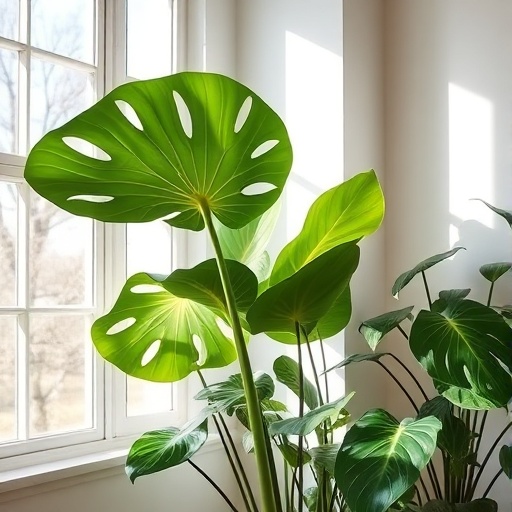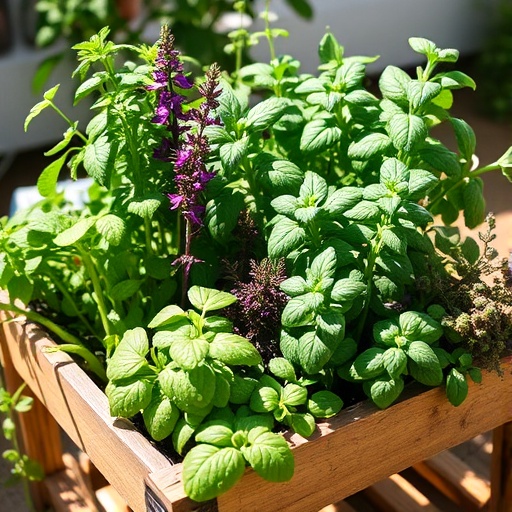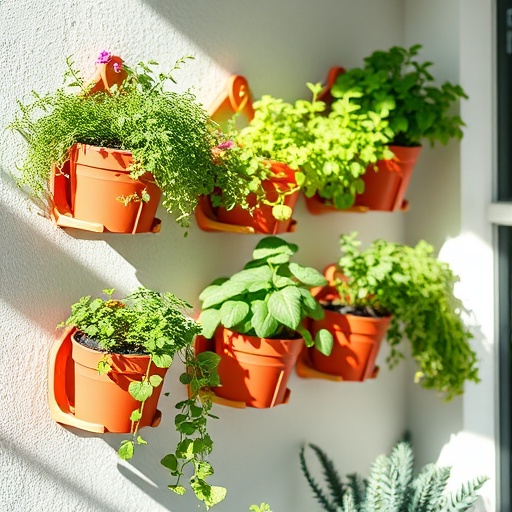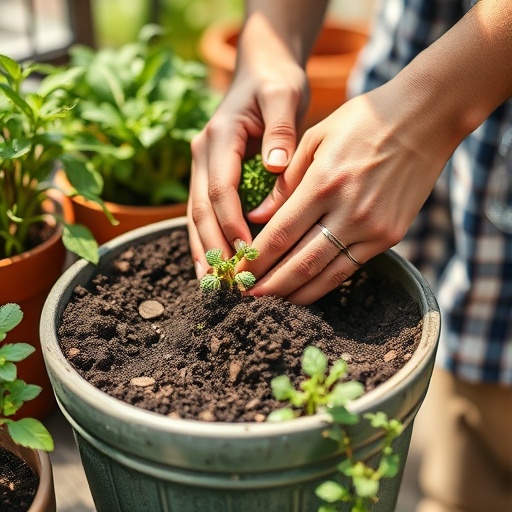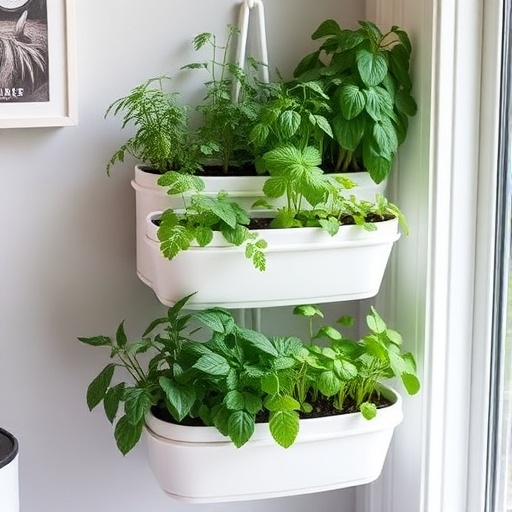Introduction
Have you ever wondered if the very air you breathe indoors could be silently contributing to your well-being, rather than hindering it? Many of us spend a significant portion of our lives inside, surrounded by common household toxins like formaldehyde, benzene, and trichloroethylene, often off-gassing from furniture, paints, and cleaning products. But what if the solution to a fresher, healthier indoor environment was as simple as bringing a bit of nature inside? This isn't just wishful thinking; specific indoor plants have been scientifically proven to act as natural air purifiers, transforming stale air into revitalizing oxygen. Forget expensive air filters; these green guardians offer an elegant, eco-friendly, and cost-effective way to detoxify your home or office space.
Tools & Materials Needed
Creating your personal air-purifying oasis doesn’t require a massive investment, but a few essential items will ensure your indoor plants thrive.
- Pots with Drainage Holes: This is non-negotiable. Proper drainage prevents root rot, a common killer of houseplants. Opt for terracotta for better breathability or recycled plastic for a budget-friendly option.
- High-Quality Potting Mix: Avoid garden soil. A good potting mix is specifically formulated for containers, offering excellent aeration and drainage. Look for mixes with perlite or vermiculite, and consider an organic blend for eco-friendly gardening.
- Watering Can: A small watering can with a long spout allows for precise watering, preventing splashes and ensuring water reaches the soil, not the leaves.
- Hand Trowel: Useful for transplanting and working with soil.
- Pruning Shears/Scissors: For removing yellowing leaves or shaping your plants. A clean cut prevents disease.
- Optional – Moisture Meter: A simple device that tells you if your plant needs water, eliminating guesswork. It's especially helpful for beginners.
- Eco-friendly Alternative: Repurpose old containers like tin cans (drill drainage holes!) or plastic bottles cut in half. For soil, you can make your own compost mix if you’re a seasoned gardener, but a quality store-bought mix is often more reliable for indoor plants.
Time & Effort Overview
Bringing air-purifying indoor plants into your home is an incredibly rewarding undertaking that demands surprisingly little time. Most of these plants are exceptionally low-maintenance, making them perfect for busy individuals or novice gardeners. Initial setup, including potting and placement for a few plants, will likely take an enjoyable 30-60 minutes.
Compared to the consistent effort needed for a demanding vegetable garden, these plants are a breeze. For instance, a Snake Plant requires watering perhaps once every 2-4 weeks, significantly less than the daily attention many outdoor herbs demand. In terms of growth, many air-purifying varieties exhibit moderate growth, visible within a few weeks to months, making the process highly gratifying. Most of the featured plants fall into the beginner to intermediate difficulty level, with none requiring advanced horticultural knowledge. This is truly a high-impact, low-effort way to boost your indoor environment.
Preparing the Soil
The foundation of healthy indoor plants lies in the soil. A good quality potting mix designed for houseplants is crucial.
- Choose the Right Potting Mix: Select a well-draining, peat-free indoor potting mix. Many premium mixes contain perlite or vermiculite for better aeration, which is vital for root health. Avoid using garden soil, as it compacts in pots and can introduce pests.
- Moisturize the Mix (Optional): Before potting, lightly pre-moisten the potting mix. It should feel damp, not soggy. This helps prevent dry pockets around the roots after planting.
- Add a Drainage Layer (Debatable but Harmless): While not strictly necessary if your pot has good drainage, a thin layer of gravel or broken terracotta at the bottom can offer an extra safeguard against waterlogging.
Potting Your New Plant
This is where your air-purifying journey truly begins! Handle your new green companion with care.
- Remove from Nursery Pot: Gently squeeze the sides of the nursery pot and carefully slide the plant out. Support the base of the plant to avoid breaking stems.
- Inspect the Roots: Check for any circling roots or signs of root rot. If roots are tightly wound at the bottom, gently loosen them with your fingers to encourage outward growth.
- Place in New Pot: Add a layer of potting mix to the bottom of your chosen pot. Place the plant so that the top of its root ball is about an inch below the rim of the new pot.
- Fill with Soil: Backfill around the root ball with more potting mix, gently patting it down to remove large air pockets. Ensure the plant is securely centered.
- Water Thoroughly: Water until you see drainage from the bottom of the pot. This settles the soil and provides initial hydration.
Initial Placement and Acclimation
Finding the perfect spot is key to your plant's long-term success and its ability to purify the air effectively.
- Identify Light Requirements: Research the specific light needs of your chosen indoor plants. Some thrive in bright, indirect light (like a north-facing window), while others prefer low light (e.g., peace lily).
- Avoid Drafts: Keep newly potted plants away from direct drafts from doors, windows, or air conditioning vents, as sudden temperature fluctuations can stress them.
- Monitor for Stress: Over the first few days, observe your plant for signs of stress like drooping or yellowing leaves. Don’t worry if it looks a little unhappy initially; it’s adjusting to its new home. Here’s how to fix minor drooping: check soil moisture and humidity, and adjust as needed.
Growth & Care Tips
Consistent, mindful care is the cornerstone of healthy, air-purifying indoor plants.
- Watering Frequency: This is paramount. Overwatering kills more houseplants than anything else. A good rule of thumb is to water when the top 1-2 inches of soil feel dry to the touch. Use your finger to check. Plants like the Snake Plant tolerate drought better than Soggy soil, while a Boston Fern needs more consistent moisture. Water until it drains from the bottom, then discard excess water.
- Sunlight Exposure: Most air-purifying beauties prefer bright, indirect light. Direct sunlight can scorch leaves, while too little light can stunt growth and reduce their air-purifying efficiency. Rotate your plants every few weeks to ensure even light exposure.
- Pruning: Remove any yellowing, dead, or diseased leaves. This not only keeps your plants looking tidy but also redirects energy to healthy growth and prevents potential pest infestations. Use clean, sharp shears.
- Fertilization: Indoor plants generally need less fertilizer than outdoor ones. Feed them once every 2-4 weeks during their active growing season (spring and summer) with a balanced liquid houseplant fertilizer, diluted to half-strength. Reduce or stop fertilizing in fall and winter.
- Pest Prevention: Regularly inspect your plants for common pests like spider mites, mealybugs, and aphids. Early detection is key. A simple solution of neem oil mixed with water can be an effective organic pesticide. Wipe down leaves regularly to remove dust and deter pests. According to NASA's Clean Air Study, plants like Spider Plants are especially efficient at removing toxins like formaldehyde, but only if they are healthy and thriving.
Eco-Friendly & Sustainable Alternatives
Embrace sustainability in your indoor gardening journey to magnify its positive impact.
- Composting: Start a small indoor compost bin for kitchen scraps. The resulting compost can be used to enrich your potting mix, reducing waste and providing nutrient-rich food for your plants.
- Natural Fertilizers: Instead of synthetic options, consider coffee grounds (for acid-loving plants), diluted compost tea, or banana peel water as natural fertilizers. They slowly release nutrients and improve soil health.
- Water Conservation: Collect rainwater or re-use water from rinsing vegetables for your plants. Group plants together to create a microclimate, increasing humidity and reducing water evaporation.
- Small Spaces Solutions: For apartments or limited areas, consider vertical wall planters (using repurposed pallets or pocket planters), hanging baskets, or tiered plant stands. Many air-purifying indoor plants like Pothos and Spider Plants are excellent for hanging, maximizing space. A stunning Peace Lily can instantly elevate a small corner on a shelf. You can even explore DIY self-watering planters using recycled plastic bottles.
Creative Ideas & Uses
Beyond their air-purifying prowess, these green companions offer endless opportunities for aesthetic enhancement and creative expression.
- Decorating with Plants: Group plants of varying heights and textures for visual interest. Place tall Snake Plants or Fiddle Leaf Figs in empty corners to add architectural height. A cascading Pothos can soften a bookshelf or entertainment center. A vibrant Spider Plant in a macrame hanger can draw the eye upwards.
- Repurposing Garden Materials: Transform old teacups into mini succulent planters, use vintage birdcages as decorative plant holders, or paint old tires to create unique outdoor planters for larger species. Even old books can be hollowed out to make unique "book planters" for tiny air plants!
- Combining Plants: Create a mini "air-purifying station" by grouping different plant species known for specific toxin removal. For example, combine a Peace Lily (removes benzene, formaldehyde, trichloroethylene) with a Boston Fern (formaldehyde, xylene) and a Kimberly Queen Fern (formaldehyde) on a credenza. This maximizes their detoxifying benefits and creates a lush, tropical feel. Varying leaf shapes and shades of green will add depth and allure to your indoor sanctuary.
Common Mistakes to Avoid
Even experienced gardeners make errors, but understanding common pitfalls can save your indoor plants.
- Overwatering: This is by far the leading cause of houseplant death. Roots need oxygen, and perpetually soggy soil suffocates them, leading to root rot. Overwatering symptoms often mimic underwatering (drooping leaves), making it confusing. Overwatering causes root rot in over 60% of houseplants, according to horticultural studies. Always check soil moisture before watering.
- Ignoring Drainage: Pots without drainage holes are a recipe for disaster. If you absolutely must use one, place your plant in a slightly smaller pot with drainage and then nest it inside the decorative, hole-less pot, adding a layer of pebbles at the bottom of the outer pot.
- Inconsistent Light: Moving plants frequently or placing them in unsuitable light conditions causes stress. Research your specific plant’s needs and stick to them. A sudden move from low light to direct sun can result in leaf burn.
- Forgetting to Dust Leaves: Dust accumulates on leaves, blocking sunlight and impeding photosynthesis. Gently wipe leaves with a damp cloth every few weeks. This also allows you to inspect for pests.
- Over-fertilization: More isn't always better. Excess fertilizer can burn roots. Follow recommended dosages, and remember that plants need less food in winter.
Maintenance & Storage Tips
Ensuring the long-term health and vitality of your air-purifying indoor plants requires ongoing attention and seasonal adjustments.
- Repotting: As your plants grow, they may become root-bound. Signs include water running straight through, roots growing out of drainage holes, or stunted growth. Repot into a pot one size larger in spring or early summer.
- Seasonal Care: Adjust watering and fertilization based on the season. In winter, most plants enter a dormant phase, requiring less water and no fertilizer. Increase humidity during dry winter months by misting or using a pebble tray.
- Addressing Yellow Leaves: Yellow leaves often indicate overwatering, nutrient deficiency, or natural aging. Check your watering schedule first. If the problem persists, consider a balanced fertilizer. Poor soil drainage can also lead to nutrient lockout, causing yellowing.
- Addressing Brown Tips: This usually points to low humidity or inconsistent watering. Mist your plants regularly, especially those that love humidity like ferns, or place them near a humidifier.
- Pest Management: Continue routine inspection. If you spot pests, isolate the affected plant immediately to prevent spread. Use appropriate organic treatments like insecticidal soap or neem oil for complete eradication.
- Seed Storage (for general gardening reference): While most air-purifying plants are purchased as established plants, if you venture into growing from seed, store seeds in a cool, dark, dry place in an airtight container to maintain viability for future planting.
Conclusion
Embracing the power of indoor plants to purify your air is more than just a passing trend; it's a profound commitment to your health, home, and the environment. From the elegant Peace Lily tirelessly removing toxins to the resilient Snake Plant offering fresh oxygen even at night, each green companion plays a vital role in creating a sanctuary of health and tranquility. By following these simple, data-driven guidelines, you’re not just decorating a space; you’re cultivating a living, breathing air filter that consistently works to improve your indoor climate. So, why wait? Start your journey today, selecting your natural air purifiers, and experience the transformative power of nature firsthand. We'd love to see your green creations! Share your photos and experiences with us in the comments below.
FAQ
Q1: Which indoor plants are the best for air purification?
A1: Some of the top performers include Snake Plant (Sansevieria trifasciata), Peace Lily (Spathiphyllum), Spider Plant (Chlorophytum comosum), Pothos (Epipremnum aureum), and Boston Fern (Nephrolepis exaltata). These indoor plants excel at removing various airborne toxins like formaldehyde, benzene, and xylene as shown in studies by NASA.
Q2: How often should I water my air-purifying plants?
A2: Watering frequency largely depends on the specific plant, pot size, light, and humidity. A general rule is to check the soil; water when the top 1-2 inches of soil feel dry to the touch. It's usually better to under-water than over-water, as overwatering can lead to root rot.
Q3: Do these plants need special fertilizer?
A3: No, not necessarily. A general-purpose liquid houseplant fertilizer, diluted to half-strength, applied every 2-4 weeks during the growing season (spring and summer) is usually sufficient. Avoid fertilizing in winter when most indoor plants are dormant.
Q4: Can I place my air-purifying plants in my bedroom?
A4: Absolutely! In fact, plants like the Snake Plant are ideal for bedrooms because they perform photosynthesis at night, releasing oxygen while you sleep. They also contribute to a serene environment, which can enhance sleep quality.
Q5: What kind of light do most air-purifying indoor plants prefer?
A5: Most of the common air-purifying indoor plants thrive in bright, indirect light. This means a spot near a window that gets plenty of light but not direct, intense sun, which can scorch their leaves. A north or east-facing window is often ideal.
Q6: Are air-purifying plants safe for pets?
A6: While many are, some are toxic if ingested. For example, Peace Lilies and Pothos can cause irritation to pets. Always research the specific plant's toxicity if you have curious pets. Safe options include Spider Plants, Boston Ferns, and African Violets.
Q7: How do I deal with pests on my indoor plants?
A7: Regularly inspect your plants for signs of pests. If you find them, isolate the plant. For mild infestations, wipe leaves with a damp cloth or cotton swab dipped in rubbing alcohol. For more stubborn pests, use organic solutions like neem oil spray or insecticidal soap, following product instructions carefully.
You may also enjoy reading our comprehensive guide on {"loc":["https://pincraftpro.com/how-to-grow-tomatoes-in-pots-2/"],"lastmod":["2025-10-08T15:09:24+00:00"]} to expand your gardening skills. For more inspiration on beautiful plant arrangements and indoor gardening aesthetics, explore this fantastic collection of ideas on Pinterest: https://www.pinterest.com/janatjanay47/. Don't forget to connect with fellow plant enthusiasts and share your tips in our community forums!
